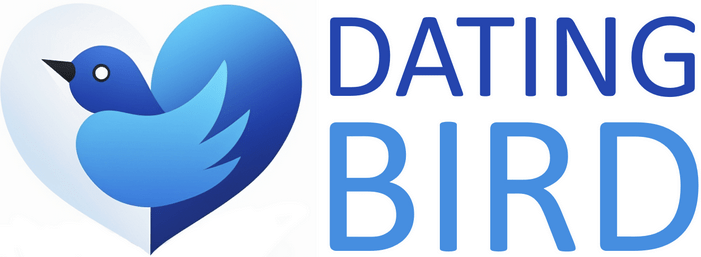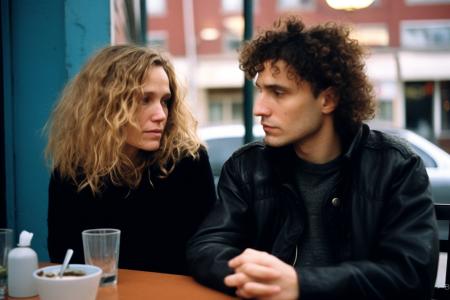Alright, my friend, you've done the soul-searching, now it's time to have that all-important conversation with your partner. But, how do you even start? Well, that's where open relationship advice comes in handy.
The golden rule here is communication. Yes, it sounds as clichéd as a rom-com, but it's as essential as a cuppa in the morning.
Now, you might be wondering, how does one effectively communicate such a delicate topic?
First, be clear about your desires. Remember, this isn't a game of charades. There's no room for hints or beating around the bush. Be straightforward, but gentle. You're not asking for the moon; you're just expressing your feelings.
You might say something like, "I've been thinking about our relationship and how we could potentially explore an open relationship." This way, you're not putting your partner on the defensive but inviting them into the conversation.
Second, listen. Your partner is bound to have concerns and questions. Maybe they're worried about jealousy, or perhaps they fear it could lead to the end of your relationship. Whatever it is, let them voice it out.
This is not the time to be defensive or dismissive. Actively listen, show empathy, and try to address their concerns.
Lastly, remember that this is not a one-time conversation. It's an ongoing dialogue. So, keep the communication lines open.
"The key to successful communication is to speak honestly, listen empathetically, and keep the conversation going."
Now, you're all set to have that chat. But remember, timing and setting are crucial. You don't want to pop this question in the middle of a row or at your favourite pub. So, how do you choose the right time and place to discuss this? Stay with me, and we'll delve into that next.
Remember, open relationship advice is not a one-size-fits-all. It's more like a bespoke suit, tailored to fit you and your partner's needs. Here's to successful conversations and exploring new horizons in your relationship!
Choosing the Right Time and Place to Discuss
Choosing the right time and place to discuss something as sensitive as opening up your relationship is absolutely crucial. It's a bit like proposing: you wouldn't do it in the middle of a row about who's turn it is to do the dishes, right?
Now, I'm not suggesting you need to go as far as hiring a skywriter or a flash mob, but the setting does matter. Creating a safe space for this conversation is essential. It's about respect and showing your partner that you care about their feelings and comfort. Opt for a quiet and private environment, where interruptions are unlikely. Your living room, perhaps, or during a peaceful walk in the park. Anywhere that you both feel relaxed and at ease.
Timing, my friends, is everything. You don't want to bring this up when your partner is stressed about work or just after they've come home from a bad day. Choose a moment when you are both calm and not preoccupied. A lazy Sunday afternoon, maybe?
Remember, this isn't a conversation to rush. Set aside plenty of time to discuss, listen, and understand each other's viewpoints. The last thing you want is to feel rushed or pressured - that's a surefire way to a misunderstanding or a disagreement.
And finally, turn to open relationship advice from experts or those who have been there before. There are plenty of resources out there to guide you. And hey, you're already here reading this, so you're on the right track!
"Choosing the right time and place for this conversation shows your partner that you respect their feelings and comfort."
Now that we've set the stage, let's move on to how you can express your desires clearly and honestly. After all, it's not just about what you say, but how you say it.
Expressing Your Desires Clearly and Honestly
When it comes to expressing your desires for an open relationship, it's not quite as simple as dropping the bombshell over a dinner of fish and chips. It's a delicate dance of clarity, honesty, and empathy. So, how do you go about it? Buckle up, we're diving in!
Clarity is your best friend here. Be crystal clear about what you want and why you want it. This isn't a time for ambiguity or beating around the bush. You're seeking an open relationship, not the location of the Holy Grail. The clearer you are, the easier it is for your partner to understand your perspective.
"Clarity in communication is the first step towards understanding in a relationship."
Moving on to honesty. Is honesty always the best policy? In this context, absolutely. Be honest about your desires, your reasons, and above all, your feelings. Remember, we're playing with hearts here, not a deck of cards.
Empathy is your secret weapon. Put yourself in your partner's shoes. How would you feel if the roles were reversed? Understanding their potential concerns will help you address them with sensitivity.
Now, here's some open relationship advice for you. It's crucial to be patient. Your partner might need time to process this new information. It's a big deal, after all. Don't rush them, and don't push for immediate answers.
So, you've expressed your desires clearly and honestly. You've shown empathy. What's next? Well, it's time to address your partner's concerns and questions. But remember, this isn't an interrogation. It's a conversation. Be open, be patient, and most importantly, be kind. After all, kindness never goes out of style, does it?
Stay tuned, as we delve into how to effectively address your partner's concerns and questions in the next section.
Addressing Your Partner's Concerns and Questions
Pop the kettle on, let's have a chat. You've opened up about your desires for an open relationship, now it's time to sit back, listen, and address your partner's concerns and questions. Remember, this isn't a debate club. It's about understanding each other's feelings and finding a common ground.
First things first, active listening is your best friend here. What does that mean? Well, it's not just about hearing the words your partner is saying, it's about understanding the emotions behind them. Are they worried? Confused? Maybe even a bit scared? These feelings are completely normal. After all, we're navigating uncharted waters here.
So, how can you address these concerns? Well, it's not about having all the answers, but about being open, patient, and empathetic. It's about saying, "I understand why you might feel that way" or "Let's find a way to make this work for both of us."
Then, there are the questions. Oh, the questions! "What if you fall in love with someone else?" "How will this affect our relationship?" "Are we still going to be primary partners?" These are tough ones, but they're also incredibly important. Don't shy away from them. Instead, answer openly and honestly, even if the answer is "I don't know."
Remember, this isn't a one-time conversation. It's an ongoing dialogue. You're not going to iron out all the kinks in one sitting. In fact, it's quite the opposite. The more you talk, the more questions will come up. But that's okay. It's all part of the process.
As our open relationship advice goes, keep the lines of communication open, be honest, and respect each other's feelings. And remember, it's okay to take things slow. There's no rush here.
So, what's next? Well, we've opened up the dialogue, addressed concerns, and answered questions. Now, it's time to navigate the transition together. But more on that later. For now, take a deep breath, pour another cup of tea and give yourself a pat on the back. This isn't easy, but you're doing great. Keep going.
"It's not about having all the answers, but about being open, patient, and empathetic. It's about saying, 'I understand why you might feel that way' or 'Let's find a way to make this work for both of us.'"










